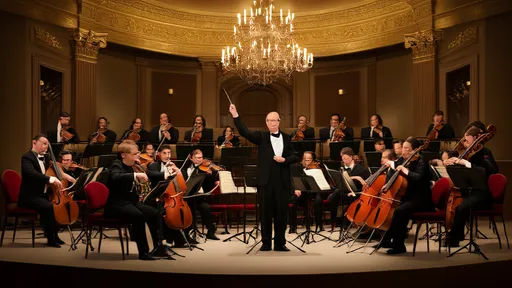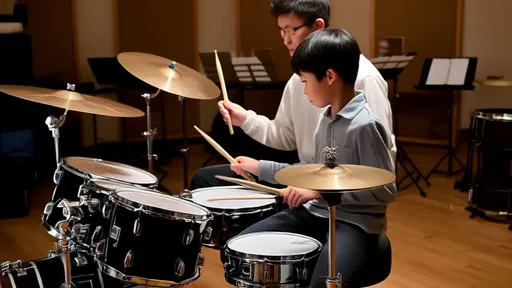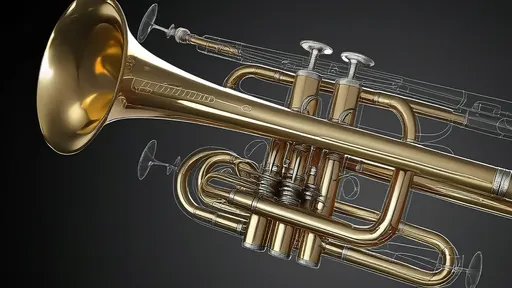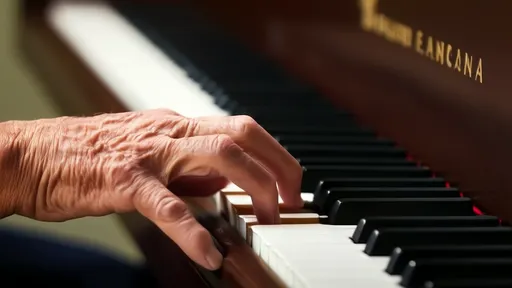For many aspiring vocalists, mastering proper breathing techniques marks the first major hurdle in their musical journey. While breathing seems like the most natural thing in the world, the type of breathing required for singing differs dramatically from our everyday respiration. Beginners often fall into several common traps that can hinder progress and even lead to vocal strain if left uncorrected.
The illusion of chest breathing proves particularly deceptive for newcomers. Many students proudly puff out their chests, believing they're taking deep breaths when in reality they're engaging in shallow upper-chest breathing. This limited air intake forces singers to gasp for breath mid-phrase and creates tension in the neck and shoulders. The visible rise and fall of the chest gives a false sense of accomplishment, while the diaphragm - our true breathing powerhouse - remains underutilized.
Another widespread misconception involves over-inflation of the lungs. Novices frequently take in more air than necessary, believing that maximum lung capacity equals maximum vocal power. This approach backfires spectacularly. An overfilled diaphragm becomes rigid rather than flexible, making controlled exhalation nearly impossible. The result? Air comes rushing out uncontrolled during phonation, causing pitch instability and forcing the vocal cords to work overtime to regulate the airflow.
The posture paradox trips up countless beginners. While teachers emphasize standing tall, students often misinterpret this as adopting a stiff, military-style posture. This rigidity actually restricts natural diaphragmatic movement. The ideal singing posture maintains the spine's natural curves while keeping the body relaxed yet alert. Many learners report their most free vocal productions occur when slightly slouching on the couch - not because poor posture helps, but because it allows their body to release unnecessary tension.
Breath retention represents another stumbling block. The desire to sustain long phrases leads many to hold their breath like divers preparing for a deep plunge. This creates excessive subglottic pressure that must be forcefully overcome to initiate sound. Instead of storing air like a tank, singers should view breath as moving energy - always flowing, never stagnant. The moment breath flow stops, the voice loses its natural connection to the body's support system.
Timing the inhale presents unexpected challenges. Beginners often wait until the last possible second to grab a breath, leaving no time for proper diaphragmatic engagement. This rushed breathing creates a cycle of tension that carries through entire phrases. Alternatively, some take breaths too early, then struggle to maintain the air until their vocal entry. Learning to anticipate breathing points while remaining musically engaged requires developing a sixth sense for phrase architecture.
The whisper-breath phenomenon demonstrates how well-intentioned advice can lead astray. Instructors telling students to "sing like you're whispering" often create breathy, unsupported tones as learners exaggerate airflow. While the image aims to reduce vocal strain, it frequently results in over-breathiness that weakens tone and strains the cords through excessive air pressure. True balanced singing requires precise coordination between breath flow and cord closure.
Perhaps most surprisingly, many beginners forget to exhale fully before taking new breaths. Residual air left in the lungs mixes with fresh intake, creating a stale breathing cycle that limits capacity. Just as a glass must be emptied before refilling, lungs benefit from complete (though not forced) exhalation. This natural reset allows for optimal oxygen exchange and prevents the buildup of muscular tension.
Breathing exercises themselves can become traps when approached mechanically. Students drilling breathing routines often focus so intensely on the process that they forget its ultimate purpose - to serve the music. The most effective breathing occurs when it becomes an unconscious response to musical demands rather than a consciously controlled maneuver. This transition from mechanical to organic breathing separates developing singers from true artists.
The journey toward mastered breathing never truly ends, even for professionals. What begins as a frustrating series of conscious corrections gradually evolves into second nature. The breath becomes not just a tool for sound production, but the invisible partner in every musical expression. With patience and mindful practice, beginners can transform these early stumbling blocks into stepping stones toward vocal freedom.

By /Jul 25, 2025

By /Jul 25, 2025

By /Jul 25, 2025

By /Jul 25, 2025

By /Jul 25, 2025

By /Jul 25, 2025

By /Jul 25, 2025

By /Jul 25, 2025

By /Jul 25, 2025

By /Jul 25, 2025

By /Jul 25, 2025

By /Jul 25, 2025

By /Jul 25, 2025

By /Jul 25, 2025

By /Jul 25, 2025

By /Jul 25, 2025

By /Jul 25, 2025

By /Jul 25, 2025